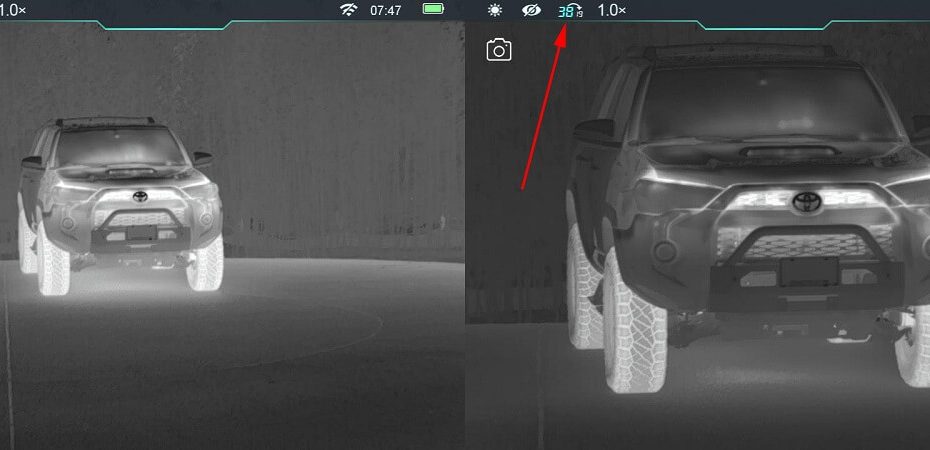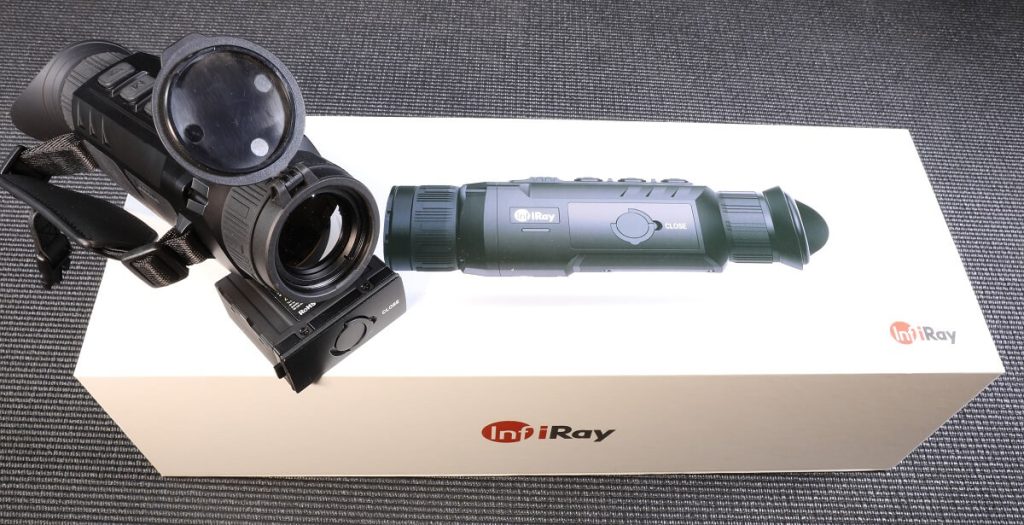
Nighttime coyote hunting is by far my favorite activity. In some ways, it has spoiled me for most other hunting. It’s just that fun. The world of night hunting can seem complicated, and the gear can get expensive in a hurry. In two previous articles, I covered my journey into thermal night vision. After consulting with the experts I settled on a thermal riflescope and a thermal scanner. In this article, I cover the IRay ZOOM, which offers a unique feature to a thermal scanner.
IRayUSA sent us a ZOOM unit to test in the field. According to the folks at IRay, we here at GunsAmerica were the first writers in North America to get our hands on the ZOOM. We put it to use right away and went night hunting one cold winter night. If you want the short version just jump down to the Hits and Misses section. The very short version is the ZOOM is a smartly built thermal scanner and the optical zoom feature is no gimmick.
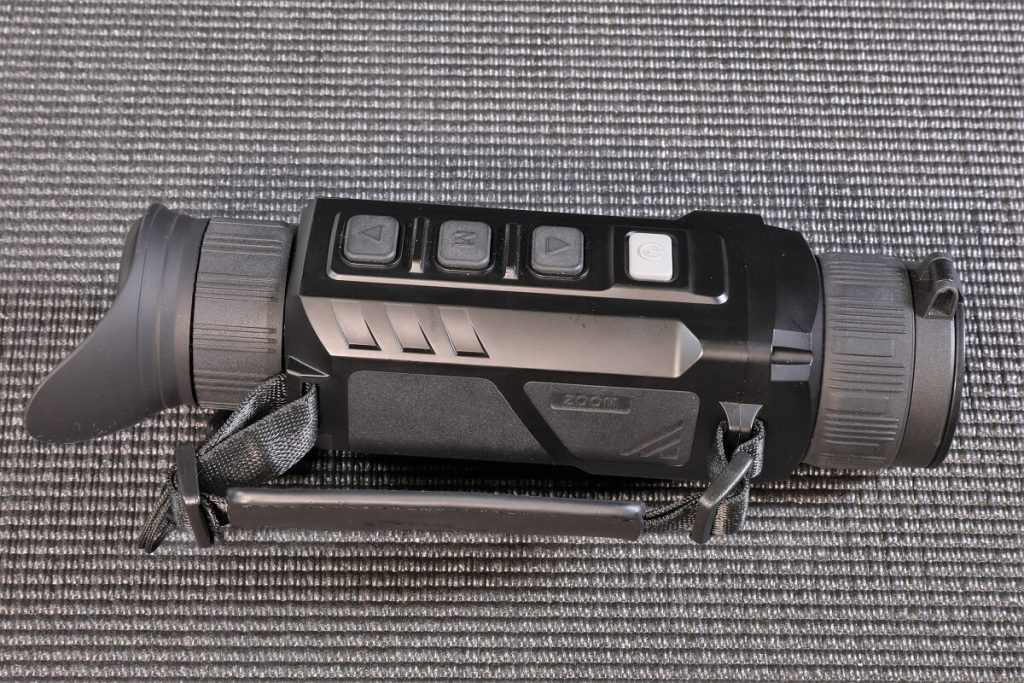
The purpose of a thermal scanner is to quickly scan your surroundings as you look for potential targets. The focus here is on detecting targets, in my case coyotes. A 1x optical magnification with high resolution is the most practical feature set for scanning. This gives you the greatest field of view so you can detect targets quickly. After detecting, you can transition to a thermal riflescope which commonly will have less field of view but better optical magnification and thus better identification capability. That’s the whole game: scan, switch to a riflescope, identify, and finish the deal. The magic of thermal is that warm-blooded creatures essentially glow in the dark relative to their surroundings. Compared to PVS-14 night vision the difference is dramatic.
The ZH38 manual claims you can detect out to 987 meters at 1x or 1974 meters at 2x. In the field, I can say this is accurate. We were picking up cattle a mile away, but the only reason we knew they were cattle had more to do with where they were and how dense the group was. But that’s detection, not identification. Similarly, groups of mule deer were easy to detect at 1000 yards or more. Typically when coyote hunting we detect a suspect and start talking to each other about identification. Invariably we know it’s a coyote by its behavior before we know it’s a coyote by seeing the details in our riflescopes. And that’s the game all night long. “You see that out there to the north?” “You mean to the right of the trees?” “Hit the call again.” “He’s coming! That’s a coyote.” With modern thermal riflescopes, there is zero confusion about identification when coyotes are in a reasonable range.
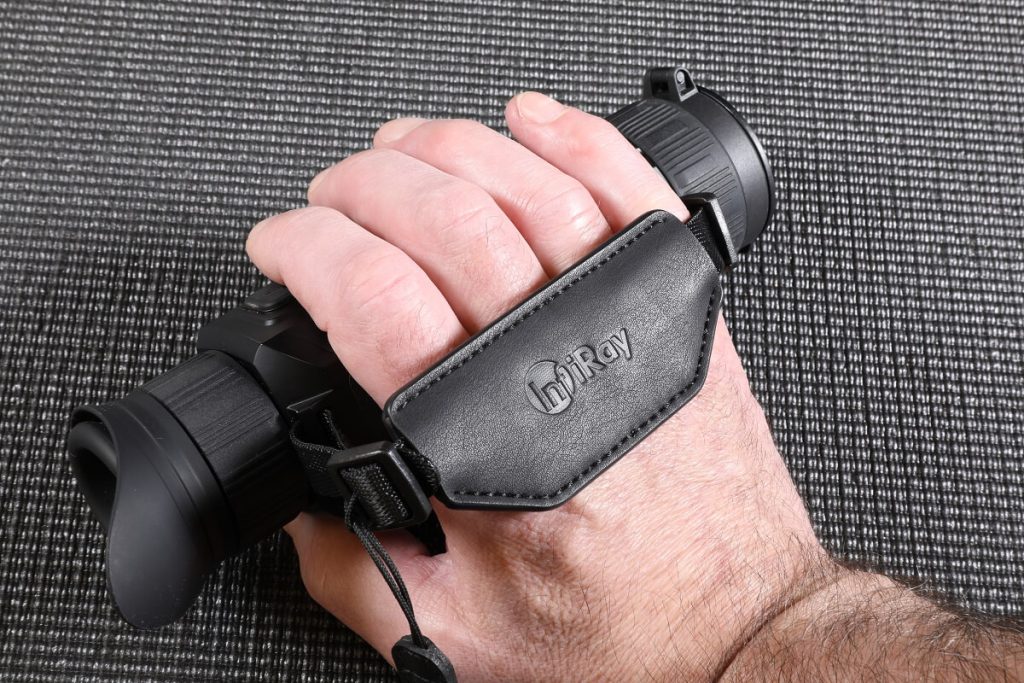
As detailed in my previous article, I use a helmet-mounted scanner. This makes scanning very natural – I just look around. While this is a great setup there are some drawbacks as compared to a handheld scanner like the IRay ZOOM. First, there is the cost of the helmet, the mounts, and all the stuff that goes on the helmet. These costs add up quickly and can be several hundred or a few thousand dollars depending on what you get. Then there is the weight of all that gear on your head. It causes strain on your neck that you don’t get with a handheld unit. With the optic out front, a counterweight of some type is used, so the entire helmet gets heavy. Finally, there’s the comfort. I’ve spent a lot of time and money getting my helmet to be comfortable on my head, and I’m not done yet. Handheld scanners like the ZOOM are simple, effective, and MUCH more comfortable to use than the helmet approach.
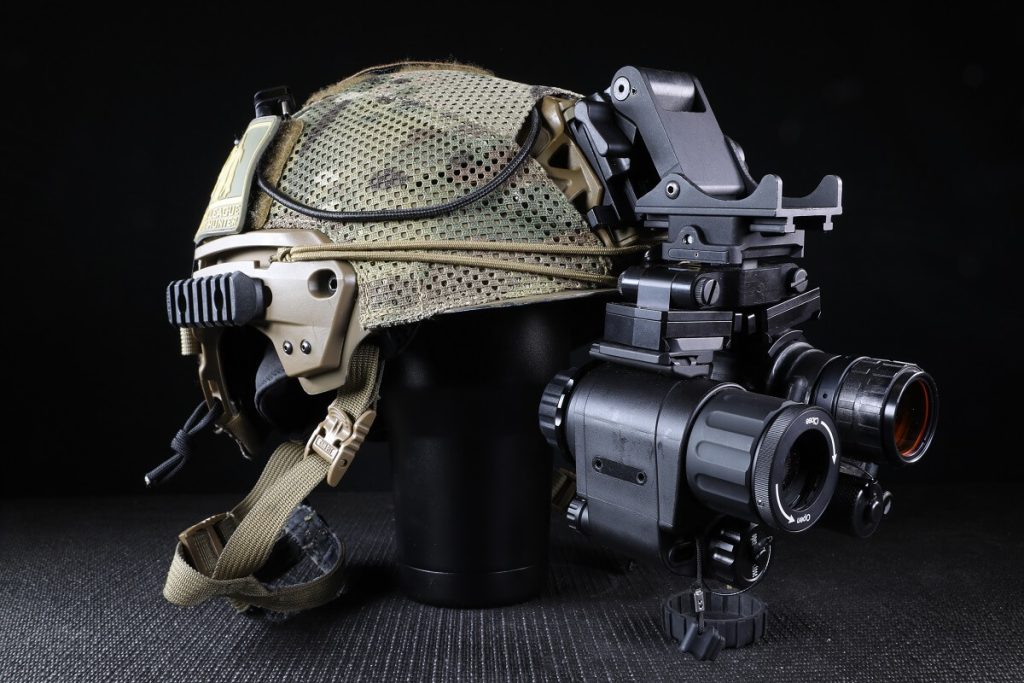
Features
The ZOOM has all the features you would expect in a higher-end thermal optic plus a few more. It uses a 12μm core and 1440×1080 OLED screen. The image quality is excellent. There are several color palettes, a brightness adjustment, WiFi, a digital compass, Picture In Picture, focusable eyepiece, one button camera, and so on. It has 32G of onboard memory for photos and video. The PIP is useful for quick identification when coyotes are inside 400 yards or so. The 50Hz frame rate keeps the image feed very natural-looking.
The truly unique feature of the ZH38 is the optical zoom. Most thermal units have a digital zoom feature. What this does is zoom in closer to the digital screen. The image gets very pixelated very quickly. Optical zoom is just like your variable power riflescope. Your only tradeoff here is the field of view. By turning the forward most ring on the ZOOM near the objective lens an optical zoom of 2x is achieved. The magnified 2x image is just as clear as the 1x version. This is a major breakthrough.

At the top of the ZOOM screen is an arrow that indicates which way to adjust to change from 1x to 2x. For example, the ZH38 unit that I tested has an arrow that points from 19 to 38 when it is on 1x. Turn the objective ring in the direction of the arrow and you switch from a 19mm to a 38mm focal length. Once this is done you are on 2x optical zoom and the arrow now points from 38 to 19 pointing the way home to 1x. Having the capability to optically zoom gives you the best of both worlds – field of view and higher magnification. Many times when scanning with my helmet monocular I wished I could zoom in optically rather than having to switch to my riflescope. The ZOOM is a great idea that is well executed.
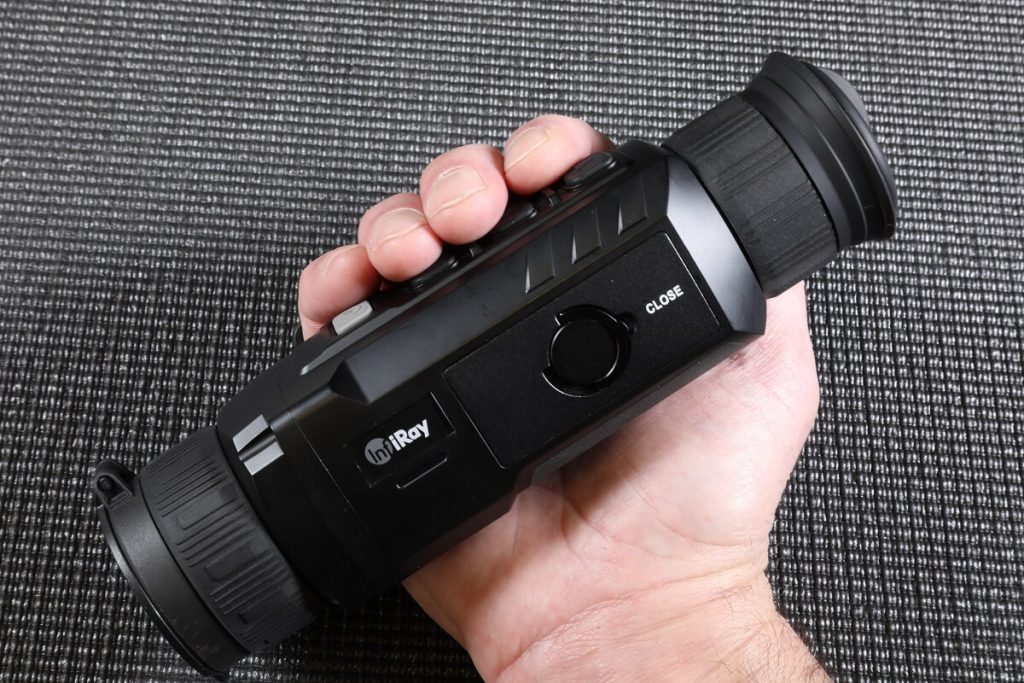
Another greatly appreciated feature of the ZOOM is the battery pack. The instructions indicate a 10-hour run time at 22 degrees Celsius (about 72 degrees Fahrenheit). Temperature affects battery life, but in the field we used the unit for 8 hours straight in temperatures below freezing before the battery indicator was red. The unit never died, however. We quit that night before it did. Technically you can attach a USB-C external battery to the unit, but I’m not sure how practical that would be. In any case, the battery lasts so long you won’t need to do so – and they give you two of them.
The ZOOM uses a four-button layout: power, up, menu, and down. Like all thermal devices, thoroughly familiarizing yourself with the layout before you hit the field is a wise move. It doesn’t take long to figure it out however and you don’t have to wait for nighttime to do so.
Manuals for Chinese-made items are notoriously bad. Clearly, IRay has spent some time making sure their manual is easy to understand and practical to use. The manual walks you through all the features and will get you in the field quickly.
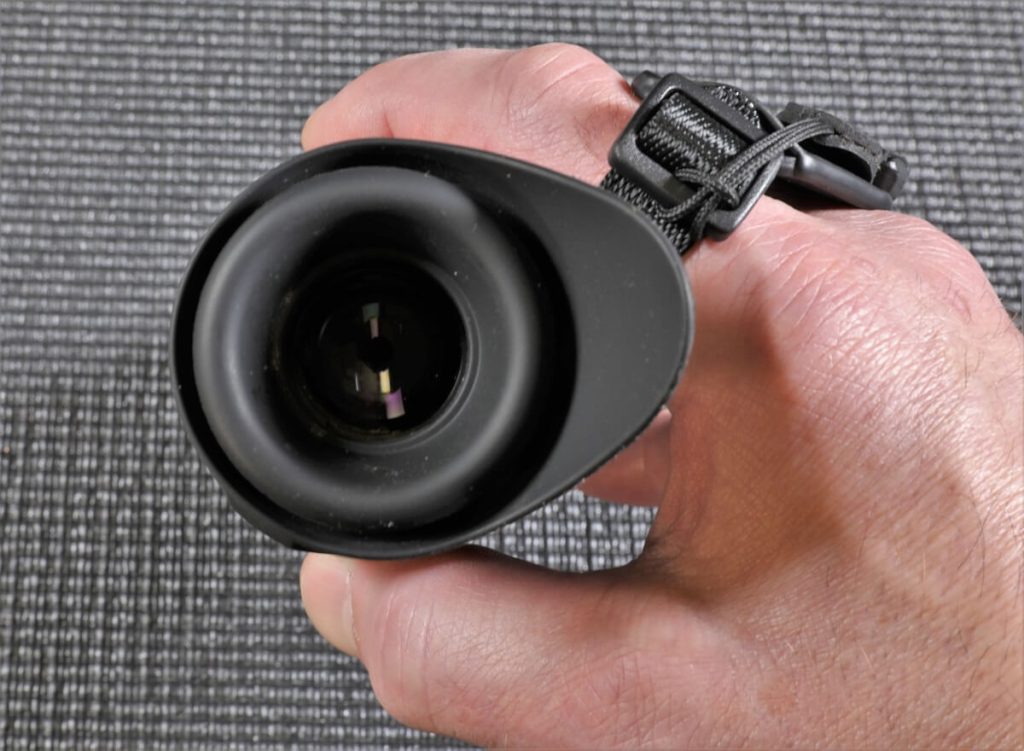
Who is IRay, Who is InfiRay, and What Models Will Be Offered?
InfiRay Outdoor is the manufacturer of ZOOM products. IRayUSA distributes and warranties InfiRay’s products. InfiRay Outdoor is located in China, whereas IRayUSA is located in Texas.
IRay will offer three models, the ZH38 (reviewed here), ZL38, and ZH50. The design of all is similar, but there are differences in focal length between the 38’s and the 50. The ZL38 also has a lower resolution (384×288) as compared to the ZH models (640×512). The optical zoom for all models is 2x, but when combined with the digital zoom the ranges are 1.1x-8.8x, 1.6x-12.8x, and 2.2x-17.6x. The digital step sizes are 1x, 2x, 3x, and 4x.
What’s In The Box
In the package, you get the ZOOM thermal monocular, a protective bag, two battery packs, a battery charger, a power adapter to connect directly to the unit, a data cable, a neck strap, a wrist strap, a Quick Start Guide, and a lens cleaning cloth. In a lot of electronics, many of these things are throw-away items, but I have to say the protective bag, neck strap, and wrist strap were well designed and well made. All were used in the field and were a big step above the usual crap you get with electronics. The bag, for example, is a nylon-covered hard shell with a custom cut-out that cradles the thermal optic and provides real protection. The neck strap is wide and comfortable, making it very easy to use the monocular to find a target and just drop the device down as you transition to the rifle.
Test Run
To thoroughly test the ZH38 I went night hunting with a friend. I handed him the unit when we exited the truck and gave him a 1-minute tutorial. That was it. He had just one question the entire night and used the ZOOM unit quite effectively for eight hours of stands. Occasionally I borrowed the unit for testing purposes, and it was great to be able to do a side-by-side comparison to my helmet setup. The fact that he used the unit with such a short introduction is a testimony to the design and feature layout. One thing to consider before you buy is renting a unit. Though not yet in the rental area of the Ultimate Night Vision website, I would expect this to be an option soon. Having dealt with Ultimate Night Vision in the past I can say this is a good way to go. For a couple hundred bucks you can test a unit on a hunt and then decide to buy.
Hits
This is a great thermal scanner with superb resolution. The zoom feature is fast, it works well, and it absolutely has practical application in the field. The button layout and feature design are both excellent. The battery pack is long-lasting, and they give you two. On-board picture and video capture are also good to have. Five-year warranty.
Misses
For misses, I can’t think of much in the way of features. The price is probably the only miss because it puts the ZOOM out of reach of most people. That said, prices are coming down and features are going up and that’s a good thing to see.
ZH38 Specs
Resolution 640×512
Pixel Size 12 micron
Refresh Rate 50Hz
Objective lens 32mm (19 or 38mm focal length)
Field of View 22.9 x 17.2 degrees (horizontal x vertical)
Digital Zoom 1-4x
Display Resolution 1440×1080
Warranty 5 years with a one-week turnaround
Price $3,999
